Thanksgiving is less than 24 hours away. In our Let’s Talk Turkey post earlier this year, we cited a number of reasons why we decided to raise our own Thanksgiving turkey this year. We’re so glad we did, and would definitely raise our own in the future.
On Sunday, dodging some very cold rain squalls, we processed one of our 32 week-old young Toms. If you’ve ever raised your own meat chickens, the procedure is basically the same, everything is just a little larger.
To minimize any potential stress to the bird, before going anywhere near the turkey pen, we ensured we were completely set up and prepared. Four main stations were setup. The first was the cull area. We used a modified (new) large traffic cone. Commercial kill cones are often not sufficient in strength, or size, for processing turkeys. The most important thing was to ensure the cone size was large enough to contain the Tom, and safely control the wings, to prevent any undue injuries to us or the turkey.
We also set up a scald tank using an outdoor propane stove, fitted with a clean, brand new 20 gallon can. Although turkeys can be dry plucked, a quick scald for a full 30 seconds in 135-140 F water makes plucking much easier, and leaves the skin intact.
A processing table, with cutting boards, knives, and compost buckets was arranged so we could each work at the table, both opposite (for plucking), and next to each other (for butchering).
Lastly, and most importantly a chill tank was set up, as the bird needs to be rapidly chilled once processed. For our chill tank we used a 100 quart marine cooler filled with 40 pounds of cube ice, and water, such that it’s deep enough to cover the carcass.
To ensure clean processing, the Tom was held off feed, with free access to water for 20 hours.
We won’t go into minute detail here regarding culling and processing, primarily because we were so busy actually preparing the turkey, that we forgot to document most of the procedure, and with the rain it wasn’t easy to keep the camera close at hand. However, if you’re interested in rearing, and processing your own turkeys, there’s an excellent and descriptive site here, and there are a few texts available as well.
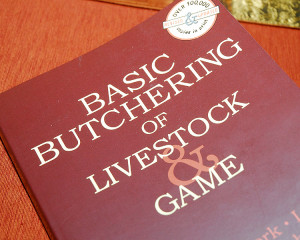
There are some books available about processing your own meat. This one was written by a Veterinarian.
The point of raising and processing the turkey ourselves was to raise a bird that lived a full, happy life, enjoyed the great outdoors, foraged on a wide variety of grains, fruits, and vegetables, and was treated with the dignity, respect, and compassion he deserved, right up through his final moments.
It’s not something I’d want to do every day, and if we all depended on rearing our own meat, the vast majority of us would no doubt eat more vegetables.
Once we were set up however, the processing went extremely well.
Even if I say so myself, to look at the turkey when we were done, you’d never know it hadn’t come from the market.
Our young Tom had a live weight of 20lbs, and a dressed weight of 14lbs. It’s typical when dressing out turkeys to lose approximately 30% of body-weight during processing. This male was a Royal Palm/Bourbon Red cross. Royal Palm first-year young Toms are expected to weigh a mere 16 lbs (live weight), and Bourbon Reds approximately 22 lbs, so our Tom’s live-weight fell exactly into our expected range.
So, would we do this again? Rear our own turkeys? Absolutely.
It’s probably the most expensive meal we’ve ever made, but sourcing true heritage breed birds locally, such as those recognized by the American Livestock Breeds Conservancy (not the commercially touted ‘heirloom’ birds, as most ‘heirlooms’ are still broad-breasted breeds that can’t fly, or mate naturally) is challenging, and can be very expensive. Honestly, we feel better knowing exactly how our turkey was raised, what it ate, how it lived, and knowing it was reared with nothing but care and compassion. Not to mention they’re a lot of fun to have around the farm!
Hopefully I can do justice to ‘Thanksgiving’ in the kitchen tomorrow. We’ll let you know it turns out!
Happy Thanksgiving!

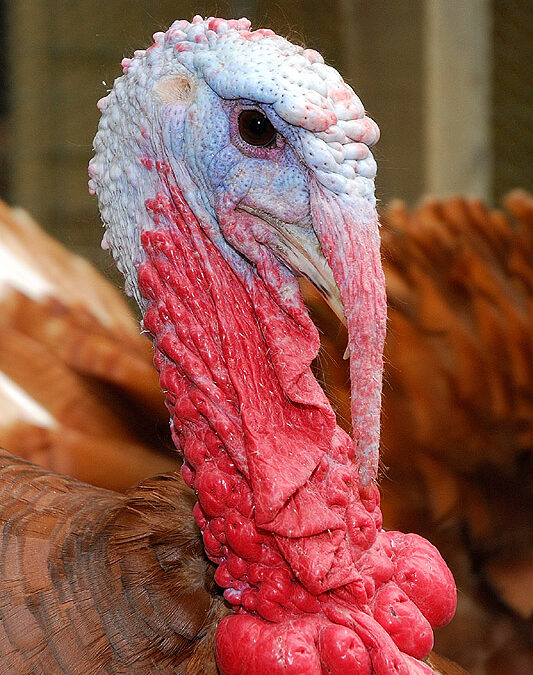
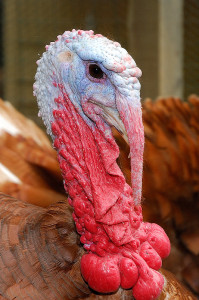
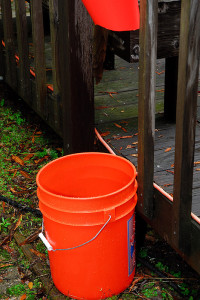

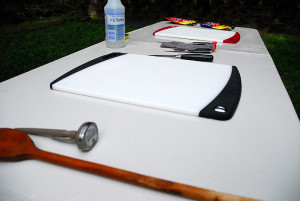
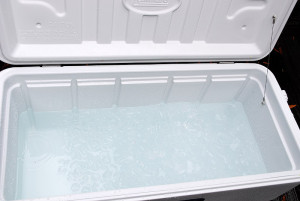


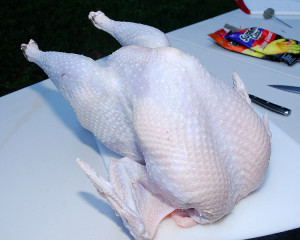
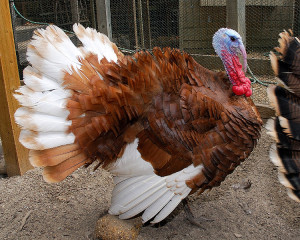








What an instructive post! Especially for those who have never witnessed and/or done this before. It’s been years since I’ve been involved in “harvesting” poultry. Congratulations! You also have the assurance that your bird is worthy of a good meal! 🙂
Hi CV,
I know I would never be able to rear and cull my own food but I certainly respect that others are able to do so. It must be an amazing feeling knowing exactly where your food came from and that the animal didn’t suffer in the slightest.
Good luck with the cooking tomorrow, I’m sure your meal will be amazing.
Wow, I had no idea this was so complicated. But good for you to have this turkey have a happy life, and treat it with respect. I’m sure you’ll enjoy the meal.
(That said, I’m looking forward to the barley roast Ms. Country Mouse makes every holiday. But if I ever have a chance to eat a turkey I’ve known personally, I just might).
As always I’m very impressed with the amount of work you put into your animals. I learned a thing or two about cleaning a turkey today! Nice to see that you’re being rewarded with a very good looking turkey dinner.
I think your Tom had a good life. I know it must be hard to kill one that you raised and loved. I greatly respect your integrity and humanity towards all of your animals Clare. Have a wonderful Thanksgiving.
Looks like you did a beautiful job – that bird appears unblemished! My boyfriend spent yesterday with a farmer friend, processing 120 turkeys for the big day. Although I never was a huge turkey fan, I do love the ones he brings home from the farm – fresh, healthy and tasty like no store-bought one could be. Have a very happy Thanksgiving at Curbstone Valley!
Clare,
Thanks so much for posting this. Next Spring we’re looking at raising some turkeys ourselves. I just need to find a source for heritage breeds that doesn’t require a 15 bird minimum order.
Well, ours aren’t pure (their parents were both purebred heritage birds though). If our Jenny succeeds in hatching youngsters in spring, we might have a few extra! 😉
You are so brave. I don’t eat red meat, and I always say that if I had to kill my own poultry, I wouldn’t eat that either. I know, I am a hypocrite. Thank you so much for reminding us that our thanksgiving turkeys come from…turkeys! Carolyn
The amount of love, care, work, and knowledge you put into rearing and culling your own bird for thanksgiving is truly inspirational!
I bet you won’t have had a turkey in previous years that you are this thankful. My hats are off to you!
I had no idea what all was involved. There’s more to it than I imagined.
I hope you have a very happy Thanksgiving!
Good luck with the cooking tomorrow! What a pretty bird it was….and is, post process. It would be a good feeling to know where your meal came from…and that he was treated so well in life. I have to admit, though, I’ve witnessed butchering by my grandpa and dad when I was a girl and found early on I have no stomach for it. Definitely found myself filling up on the vegetables and biscuits any time I witnessed such a thing. Thanks for keeping these photos palatable.
Your processed bird does look as perfect as any store bought turkey. I can’t wait to hear how it tastes! I admire you for the great job you have done raising your turkeys. Best wishes for a wonderful Thanksgiving.
I am so impressed at your dedication to excellence. I could never raise my own meat, but commend you on the love and compassion that you show in doing so. Your processed turkey did look like the ones from the store, but you can bet when I unpack mine tomorrow, I will be taking a second look at it. I always appreciate the poultry for the life it gave, but I will have a little bit more respect now for those who helped bring it to the table. And just for those thinking my post is about a real turkey, Saving the Turkey is one just for fun.
Great Thanksgiving post. You definitely put your money (time and energy) where your mouth is to raise and prepare this bird for dinner. I wish we all knew where the birds we’ll be eating tomorrow actually came from and how they lived. Happy Thanksgiving.
Dear Clare, I know for me that this would have been the most problematic part of rearing the turkeys, but if one wishes to eat meat then I wholeheartedly endorse knowing how the meat has been reared. I am certain that, as with all aspects in your animal husbandry, you were meticulous in carrying out this process and you have certainly given all your animals a good life.
I am sure that the turkey will be delicious. Fortnum and Mason, the eponymous London grocers, are selling Bourbon Red turkeys this year at eyewatering prices……future business?!!!
As much as we enjoyed raising our own, we really don’t want to raise turkeys commercially, and honestly I’m not sure we’d have room. 😉
I just peeked at the Fortnum and Mason prices for their Bourbon Reds, and actually, they’re about on par with sourcing such breeds from small farms here. I agree, the prices are eye-watering, but I have to say though, the flavor and texture difference, and peace of mind, is worth it.
A beautiful bird both before and after processing. I’ll look forward to the follow-up post.
Great post! Really nice setup. I am impressed with your bird, the condition is clearly top-notch. Bravo! Hope your holiday was grand. Cheers! Bonnie